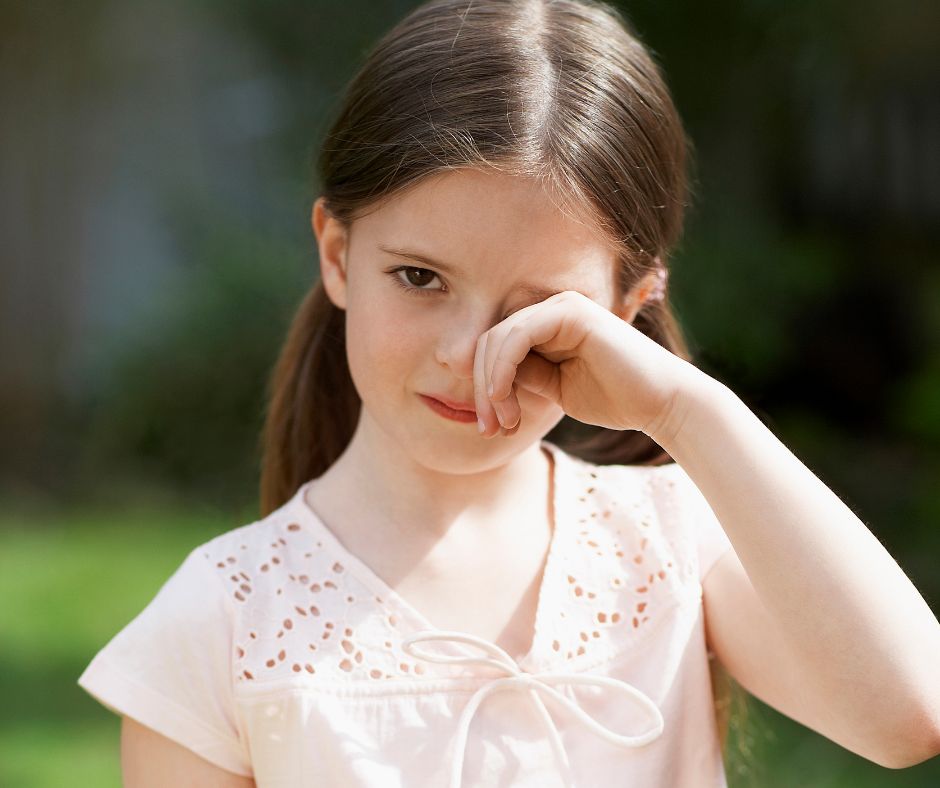
20 Jul 3 Facts About Child Eye Allergies: Causes, Symptoms & Treatment
Did you know that children can experience allergic reactions in their eyes too? It’s a common condition that impacts their daily lives, causing discomfort and irritation. Allergens such as dust, contact with pets, or exposure to certain types of pollen can trigger these eye allergies in kids. Let’s dive into 3 facts about child eye allergies and discover how to help them find relief from the discomfort.
1. What Causes Eye Allergies In Children?
Exposure to allergens triggers eye allergies
Children are more susceptible to eye allergies when they encounter certain substances known as allergens. These allergens can be found both indoors and outdoors, and their presence can cause a range of symptoms, including itchy and watery eyes. When children are exposed to these allergens, their immune system reacts by releasing chemicals that cause inflammation in the eyes, leading to the development of eye allergies.
Pollen, dust mites, and pet dander as common causes
One of the most common causes of eye allergies in children is pollen. During certain times of the year, such as spring or fall, plants release pollen into the air. Dust mites and pet dander are also common culprits for causing eye allergies in children. When children with allergies come into contact with these allergens, they can trigger an allergic reaction in their eyes.
Genetic predisposition can contribute to eye allergies
In some cases, a child’s genetic makeup may make them more prone to developing eye allergies. If one or both parents have a history of allergic conditions like asthma or hay fever (allergic rhinitis), there is a higher likelihood that their child will also experience eye allergies. Genetic factors play a role in determining how a child’s immune system responds to environmental stimuli like allergens.
2. What Are The Symptoms Of Eye Allergies In Children?
Itchy, Red, and Watery Eyes:
One of the most common symptoms of eye allergies in children is itchy, red, and watery eyes. When children are exposed to allergens, such as pollen or pet dander, their eyes may become irritated and start itching.
Frequent Rubbing of the Eyes:
Children with allergies often rub their eyes frequently due to the itchiness caused by allergic reactions. The constant rubbing can further irritate the eyes and make them appear red and swollen. It is important to discourage excessive eye rubbing as it can worsen the symptoms and potentially lead to complications.
Swollen Eyelids and Sensitivity to Light:
In addition to itchy and red eyes, children with eye allergies may experience swollen eyelids. The swelling can make their eyes look puffy and feel heavy. Another symptom that may accompany eye allergies is sensitivity to light. Children might find bright lights uncomfortable or experience increased sensitivity when exposed to sunlight.
3. How Do You Treat Eye Allergies In Children?
Over-the-counter antihistamine eye drops provide relief
Over-the-counter (OTC) antihistamine eye drops are an effective treatment for eye allergies. These eye drops work by blocking the release of histamines, which are responsible for causing allergic reactions. By reducing the histamine levels in the eyes, these drops can alleviate symptoms such as itching, redness, and swelling.
Prescription medications like mast cell stabilizers can be used
In cases where OTC options may not provide sufficient relief, prescription medications known as mast cell stabilizers can be prescribed by an optometrist. Mast cell stabilizers work by preventing the release of histamines from cells in the eyes, thus reducing allergic reactions. These medications are available in both eye drops and oral forms. Eye drop versions need to be applied directly to the eyes, while oral antihistamines should be taken as directed by a doctor.
Cold compresses help alleviate eye allergy symptoms
In addition to using medication, cold compresses can also provide relief for children experiencing eye allergies. Applying a cool compress or washcloth to the affected area can help reduce inflammation and soothe irritated eyes.
In conclusion, it is crucial to prioritize the health of your child’s eyes when dealing with eye allergies. By understanding the causes and symptoms of eye allergies in children, you can take appropriate measures to manage and treat their condition effectively. Talk to an optometrist if you believe your child has eye allergies, so they can recommend appropriate treatment options. To book an appointment at Dr D’Orio Eyecare, visit https://drdorioeyecare.com/book-appointment/ or call us at 416-656-2020 for our Toronto location, or 416-661-5555 for our North York location.


